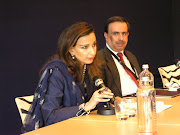The Crisis In Kashmir, Sumit Ganguly, Woodrow Wilson Center Press & Cambridge University Press
KASHMIR is a bloody conflict. It is also big business. More than 10,000 Kashmiris have been killed since 1989 and several lakhs displaced from the Valley. But, for many, Kashmir is a source of profit; a commodity that has been successfully packaged, marketed and sold across the world. According to one survey, more than 1,000 books have been published on Kashmir since 1990 in India alone. And nearly every major city in the West, from Bilbao to Boston, has hosted a seminar on Kashmir. The World Wide Web has several dozen sites devoted to some aspect of the so-called Kashmir question.
In Delhi alone, there are half-a-dozen NGOs apparently studying Kashmir (although the members are usually seen in Geneva), and quite a few newspapers or journals devoted to dissecting every facet of the troubled Valley.
The first casualty of the com-modification of Kashmir is truth and scholarship. Propaganda and sloganeering seem to have substituted objectivity and quality research. Even academic writings display mediocrity. In Double Betrayal: Repress -ion and Insurgency in Kashmir, the otherwise well-respected academic Paula Newburg made the outrageous suggestion that Kashmiri Pandits "liken themselves to Afrikaners who they mistakenly believe were the 'original' inhabitants of South Africa." Similarly, recent books by the usually scholarly Alast-air Lamb display an obvious bias.
And that is just one reason why Sumit Ganguly's The Crisis in Kashmir: Portents of War, Hopes of Peace comes as such a pleasant surprise. Both as an old fashioned narrative and as a rigorous theoretical endeavour it is outstanding. It is arguably the most thoughtful book on Kashmir since the late Sisir Gupta's masterly Kashmir: A Study in India-Pakistan Relations written in the 1960s.
The principal question that the book seeks to answer is the obvious: what factors explain the rise of violent ethnoreligious sentiment in Kashmir in 1989? Ganguly first convincingly refutes traditional explanations. According to him, the crisis in Kashmir is not simply a product of the machinations of Pakistan, or a reaction to India's 'betrayal' of its plebiscite promise or a result of the breakdown of the ethos of Kashmiriyat. Instead, he offers a powerful alternative thesis which is intuitively and intellectually satisfying. In his words, "Kashmir is the result of a fundamental paradox of Indian democracy: Kashmir represents both the mobilizational success and, simultaneously the institutional failure of Indian democracy."
According to Ganguly, Indian policies and programmes produced political mobilisation on an unprecedented scale in Kashmir. Yet, simultaneously successive national governments with varying degrees of commitment to democracy did little to promote the strengthening of institutional politics in Jammu and Kashmir. It is this dichotomy—the increase in political mobilisation against a background of institutional decay—that explains the origins of the secessionist insurgency. As Prof Jack Synder of Columbia University put it, "the ironies of modernization" have produced the endemic conflict.
The only weak link in Ganguly's otherwise rock-solid book is the chapter on strategies and options for resolving the crisis. While Ganguly himself is clearly in favour of the "politically realistic" option of giving Kashmir pre-1952 autonomy, he gives little play to more creative alternative solutions. Given, however, the political situation, it does not seem likely that any acceptable package of autonomy can be easily worked out. And while Ganguly may convincingly argue that Kashmir isn't Punjab, for the powers that be, the Amritsar model seems to be working even in Srinagar.
(Source: Outlook, 13/10/1997)






